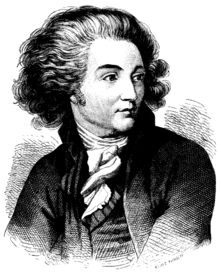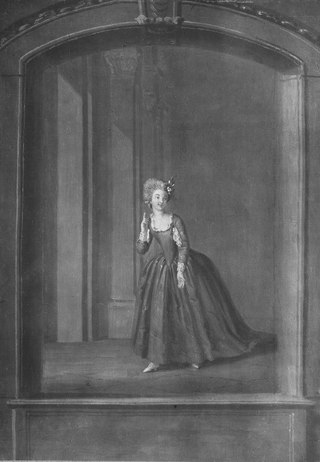| Years in Sweden: | 1786 1787 1788 1789 1790 1791 1792 |
| Centuries: | 17th century · 18th century · 19th century |
| Decades: | 1750s 1760s 1770s 1780s 1790s 1800s 1810s |
| Years: | 1786 1787 1788 1789 1790 1791 1792 |


Events from the year 1789 in Sweden
| Years in Sweden: | 1786 1787 1788 1789 1790 1791 1792 |
| Centuries: | 17th century · 18th century · 19th century |
| Decades: | 1750s 1760s 1770s 1780s 1790s 1800s 1810s |
| Years: | 1786 1787 1788 1789 1790 1791 1792 |


Events from the year 1789 in Sweden
| | This section needs expansion. You can help by adding to it. (June 2015) |

Charles XIII, or Carl XIII, was King of Sweden from 1809 and King of Norway from 1814 to his death. He was the second son of King Adolf Frederick of Sweden and Louisa Ulrika of Prussia, sister of Frederick the Great.

Adolf Frederick, or Adolph Frederick was King of Sweden from 1751 until his death in 1771. He was the son of Christian August of Holstein-Gottorp, Prince of Eutin, and Albertina Frederica of Baden-Durlach. He was an uncle of Catherine the Great and husband to Louisa Ulrika of Prussia.

Baron Gustaf Adolf Reuterholm, was a Swedish statesman. He acted as the de facto regent of Sweden during the minor regency of Gustav IV Adolf of Sweden between 1792 and 1796.

Frederica of Baden was Queen of Sweden from 1797 to 1809 as the consort of King Gustav IV Adolf.

Sophia Magdalena of Denmark was Queen of Sweden from 1771 to 1792 as the wife of King Gustav III.

Princess Sophia Albertina of Sweden was the last Princess-Abbess of Quedlinburg Abbey, and as such reigned as vassal monarch of the Holy Roman Empire.

Hedwig Elisabeth Charlotte of Holstein-Gottorp was the queen consort of Charles XIII of Sweden and II of Norway. She was also a famed diarist, memoirist and wit. She is known as Hedwig Elisabeth Charlotte, though her official name as queen was Charlotte (Charlotta).

Prince Frederick Adolf, Duke of Östergötland was a Swedish Prince, youngest son of King Adolf Frederick of Sweden and Louisa Ulrika of Prussia, a sister of Frederick the Great, King of Prussia. He was given the title Duke of Östergötland.

Fredrika Charlotte "Lolotte" Forssberg (1766–1840) was a Swedish noble and lady-in-waiting, later countess Stenbock. She was one of the most talked about people of her time as the possible child of King Adolf Frederick of Sweden. Princess Sophia Albertina of Sweden investigated her birth in the 1790s and tried to have her acknowledged as the daughter of her father. The truth is unconfirmed, though it is considered likely that she was the illegitimate daughter of the king.

Countess Magdalena "Malla" or "Malin" Charlotta Rudenschöld was a Swedish lady-in-waiting and conspirator. She was a key member of the Gustavian Armfelt Conspiracy who conspired to depose the regency government of Duke Charles. She was convicted of treason, pilloried, and sentenced to life in prison.

Countess Christina Augusta Löwenhielm, was a Swedish noblewoman and courtier. She is known for her love affair with the later Charles XIII of Sweden. She is also famous in history as one of "the three graces" of the Gustavian age; three ladies-in-waiting immortalized in the poem Gracernas döpelse by Johan Henric Kellgren, and known profiles of the epoch.

Adolf Fredrik, Count Munck, was a Swedish and Finnish noble during the Gustavian era. His family name is sometimes inaccurately given as "Munck af Fulkila" because his father usurped this family's title in the Swedish Diet but, as a matter of fact, without genealogical justification.

Hedvig "Hedda" Eleonora von Fersen was a Swedish noble, lady in waiting to the Swedish queen, Sophia Magdalena of Denmark. She was the daughter of Axel von Fersen the Elder and Hedvig Catharina De la Gardie and the sister of Count Axel von Fersen the Younger, Sophie Piper and Fabian von Fersen (1762–1818). In 1773, she married marshal Baron, later Count Thure Leonard von Klinkowström in his second marriage, and with him had four children, among them the artist Hedvig Amalia Charlotta Klinckowström and Count Axel Leonhard von Klinckowström, member of the Royal Swedish Academy of War Sciences and la Société pour l'encouragement de l'industrie nationale.

Ulrika "Ulla" Eleonora von Höpken, later von Wright, née von Fersen, was a Swedish countess and courtier. She is also famous in history as one of "the three graces" of the Gustavian age; three ladies-in-waiting immortalized in the poem Gracernas döpelse by Johan Henric Kellgren. She was a leading socialite and trendsetter in contemporary Sweden, and one of the best known personalities of the Gustavian age.
Maria Aurora Uggla, married name Ehrengranat (1747–1826), was a Swedish lady in waiting and noble. She was the lady in waiting and confidant of the Swedish Queen, Sophia Magdalena of Denmark, and later the head of the court of Crown Prince Gustav Adolf.
Johanna "Jeanna" von Lantingshausen, née von Stockenström, (1753–1809), was a Swedish noble and courtier. She is foremost known as the instigator of the political demonstration by the noblewomen toward Gustav III in opposition of his parliamentary act of 1789.
Camille du Bois de la Motte (1764–1819) was a French marchioness and political activist. In 1789, she was involved in the plans of Princess Hedvig Elisabeth Charlotte, a future queen of Sweden, to depose King Gustav III of Sweden, and acted as the link between Hedvig Elisabeth Charlotte and the Fersen family.
Count Fabian Reinhold von Fersen was a Swedish count, politician, officer and courtier. He was the son of Axel von Fersen the Elder and Hedvig Catharina De la Gardie and the brother of Count Axel von Fersen the Younger, Hedvig Eleonora von Fersen and Sophie Piper.

Christina Charlotta "Charlotte" Stierneld née Gyldenstolpe (1766-1825) was a Swedish courtier; governess for the royal children in 1802-1809, and överhovmästarinna to the queen of Sweden, Hedvig Elisabeth Charlotte of Holstein-Gottorp, from 1811 to 1818.

The 1789 Conspiracy was a plot in Sweden in 1789, with the purpose of deposing Gustav III of Sweden, and place his brother Charles XIII of Sweden on the throne. The plot was instigated by a group of conspirators at the royal court, consisting of among others the king's sister-in-law, Charles' spouse Hedvig Elisabeth Charlotte of Holstein-Gottorp, the king's youngest brother Prince Frederick Adolf, Duke of Östergötland, and Charles' favorite Gustaf Adolf Reuterholm. The plot was influenced by the opposition of the nobility against Gustav III because of the Union and Security Act during the Russo-Swedish War (1788–1790), and the plan was to convince Charles to act as the central figure and symbol of this opposition. The plot was discontinued because Charles, when informed, refused to participate in it. The plot was never officially exposed and did not result in any legal action.